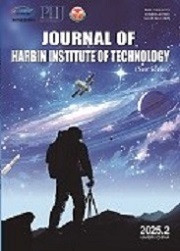| Author Name | Affiliation | | Zhongyou Xie | School of Architectural Engineering, Tongling University, Tongling 244061, Anhui, China | | Limin Guo | School of Science, Changzhou Institute of Technology, Changzhou 213032, Jiangsu, China | | Cheng Li | School of Automotive Engineering, Changzhou Institute of Technology, Changzhou 213032, Jiangsu, China | | Jianwen Cai | School of Automotive Engineering, Changzhou Institute of Technology, Changzhou 213032, Jiangsu, China |
|
| Abstract: |
| Two cross-sectional configurations of thin-walled square tubes partially filled with lightweight metallic foams are proposed, and termed as double-cell configuration partially filled with foam (DC-PF) and double-tube configuration partially filled with foam (DT-PF), respectively. The bending crashworthiness is investigated based on three-point bending tests using finite element ABAQUS/Explicit code. The two key mechanical indicators including Crash Load Efficiency(CLE) and Specific Energy Absorption (SEA) are introduced to evaluate the effect of foams in comparison with empty square tubes and fully filled square tubes. The numerical results show that the two partially filled configurations, especially DT-PF, display dramatically excellent bending crashworthiness compared with empty and fully filled square tubes. There exists a foam density threshold, beyond which the CLE of DT-PF achieves a maximum constant. In addition, there seems to be another foam density threshold, beyond which the SEA of DT-PF gets to the maximum value. It is also shown that the foam density threshold corresponding to the maximum SEA varies with the thickness of thin-walled square tubes. |
| Key words: thin-walled tube lightweight foam bending crashworthiness energy absorption finite element analysis |
| DOI:10.11916/j.issn.1005-9113.24002 |
| Clc Number:O347 |
| Fund: |






